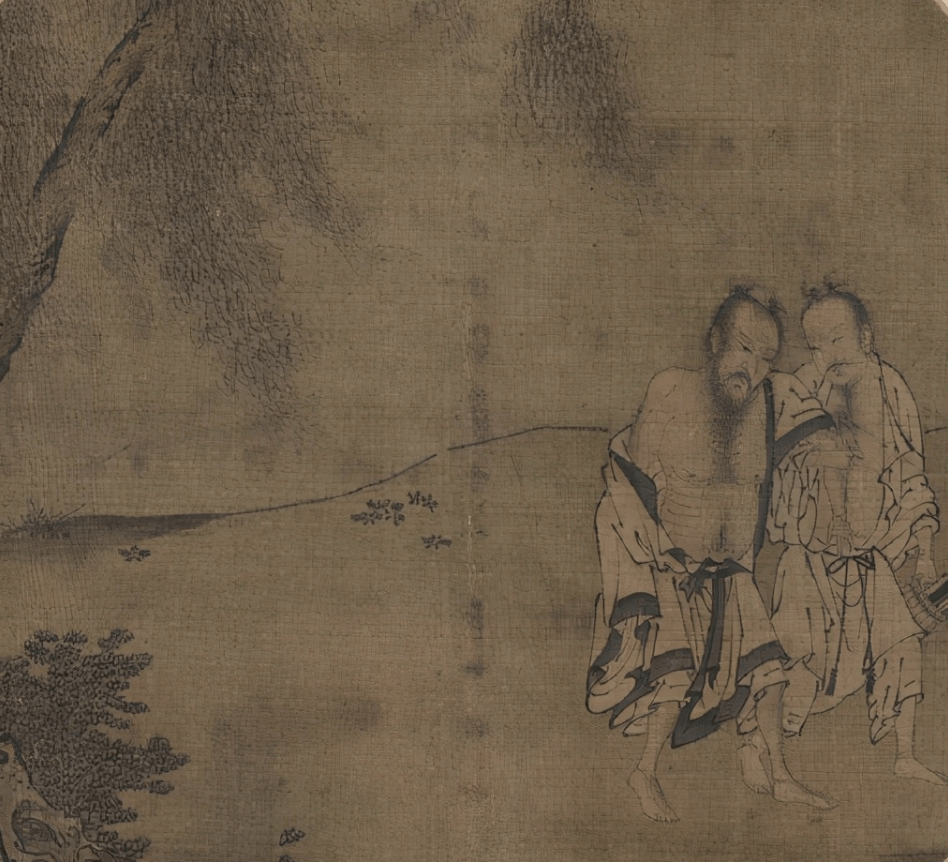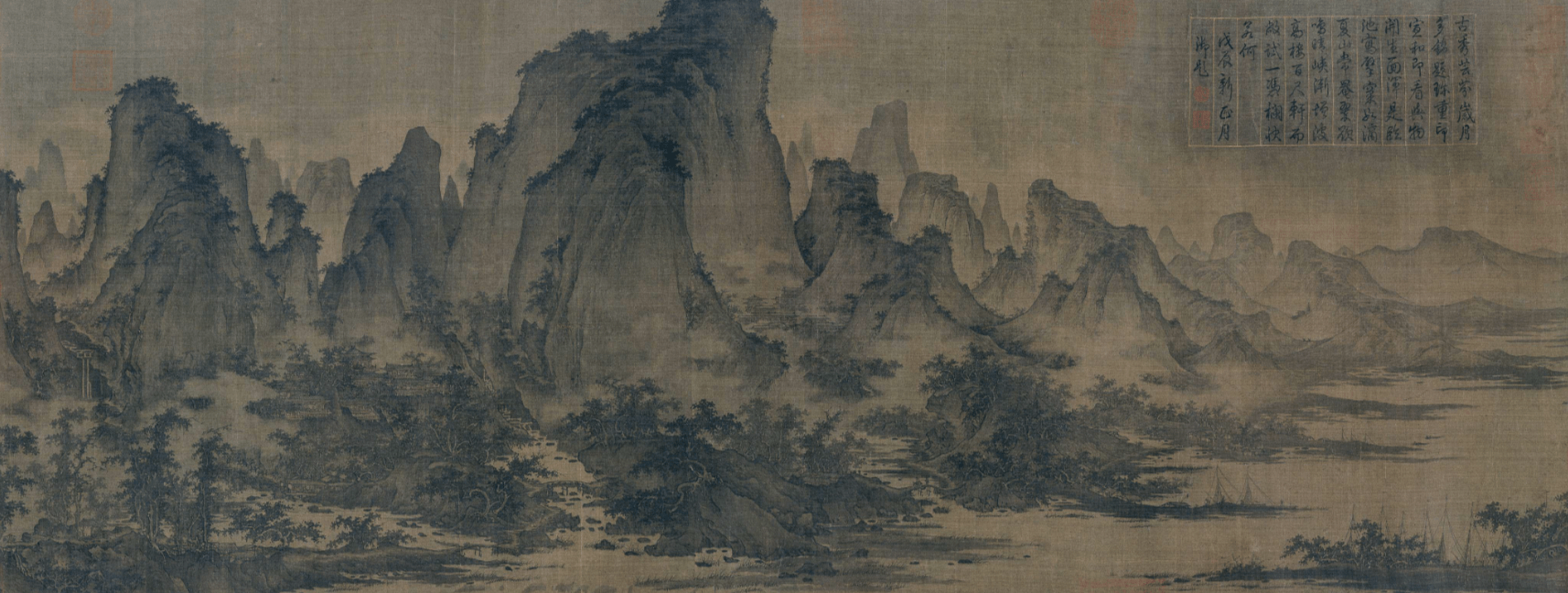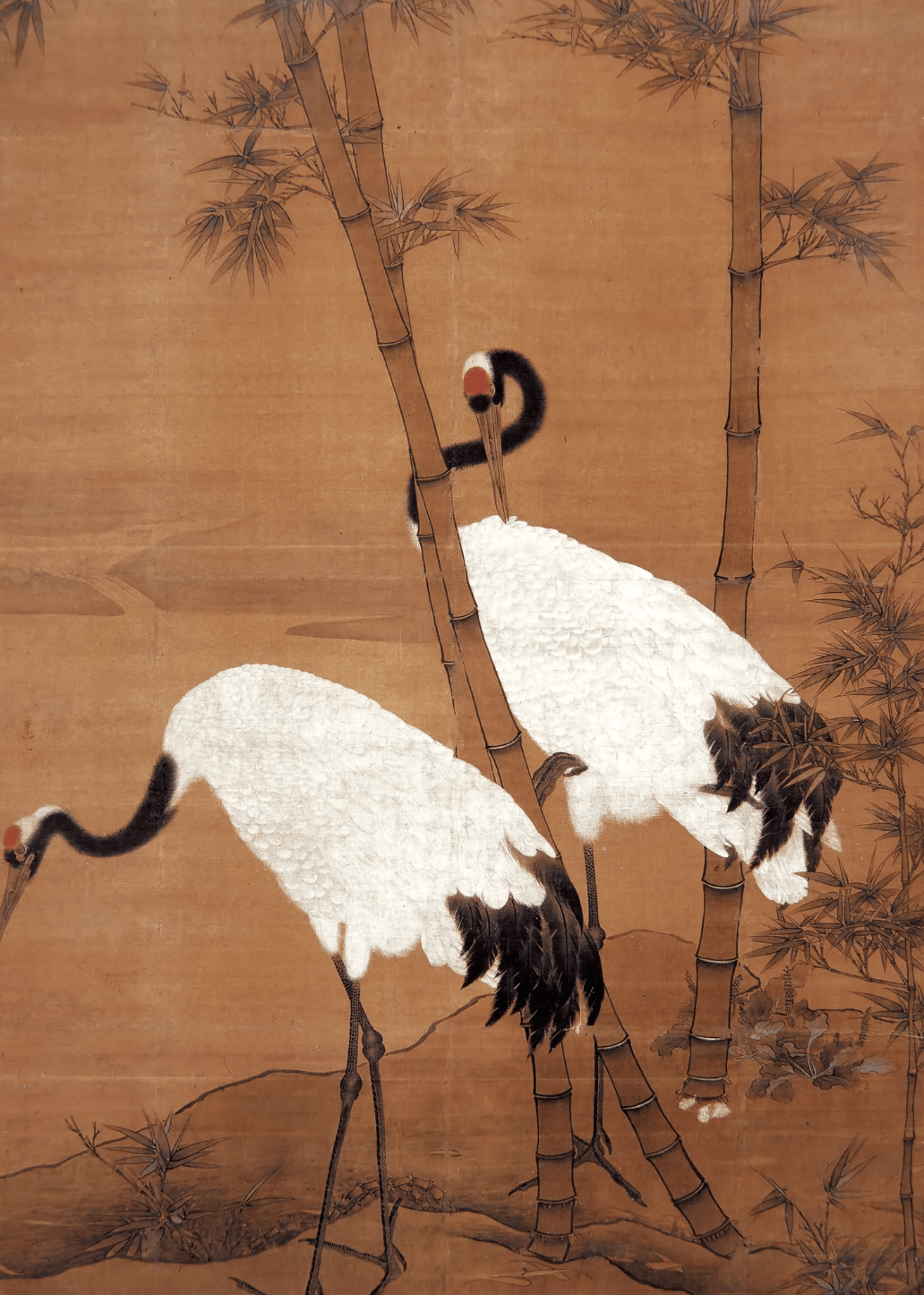yaoguai
Elder Brother Ding
During the Kangxi era, in the countryside near Yangzhou(揚州), there was a man named Yu Er(俞二) who made a living as a farmer. One day, Yu Er went into the city to collect the payment for the wheat he had sold. The owner of the grain store insisted on treating him to some drinks. By the time Yu Er was on his way back, it was already dark. As he reached Hongqiao(紅橋), a dozen or so small figures appeared and approached him, pulling and tugging at him.
The Water Monster’s Breath
There was a man named Cheng Zhizhang(程志章) from Hangzhou who once traveled from Chaozhou(潮州) through Huanggang(黃崗) by boat, crossing a sea channel. Halfway through the journey, a strong wind suddenly arose, and a black vapor surged from the water. Within this vapor was a figure, entirely black, with only the eye sockets and lips as white as powder. He boarded the boat Cheng Zhizhang was on, sat at the bow, and blew air toward the people on the boat.
YaZi/睚眦: The Vengeful Mythical Beast of Ancient China
The Spirit of the White Stone
In Tianchang County(天長), there was a magistrate named Lin who served in the capital city’s district. In his home, there was a spirit-writing altar occupied by a monster. This monster claimed to be the ‘True Man of the White Stone(白石真人)’ and accurately foretold fortunes and misfortunes for those who sought its advice.
The monster often persuaded Magistrate Lin to cultivate the Dao and practice immortal arts, claiming that by opening a third eye on his face, he could see the palace where the Heavenly Emperor resided and the immortals frolicking in the clouds.
SuanNi/狻猊: The Majestic Mythical Beast of Chinese Legend
The Obstinate Rock of Nanshan
In Haichang(海昌), there was a scholar named Chen(陳秀才某) who once visited the Yusu Temple(于肅愍廟) to seek dreams and divine the fortunes of his future. In his dream, Yusu opened the main gate to receive him, but instead of feeling at ease, Chen became restless. After a few steps, he stopped. Yusu said, ‘You are to be my future student, so according to protocol, you should enter through the main gate.’ Once settled, messengers arrived to report that the City God of Tangxi County(湯溪縣城隍) wished to see him.
Zheng/猙
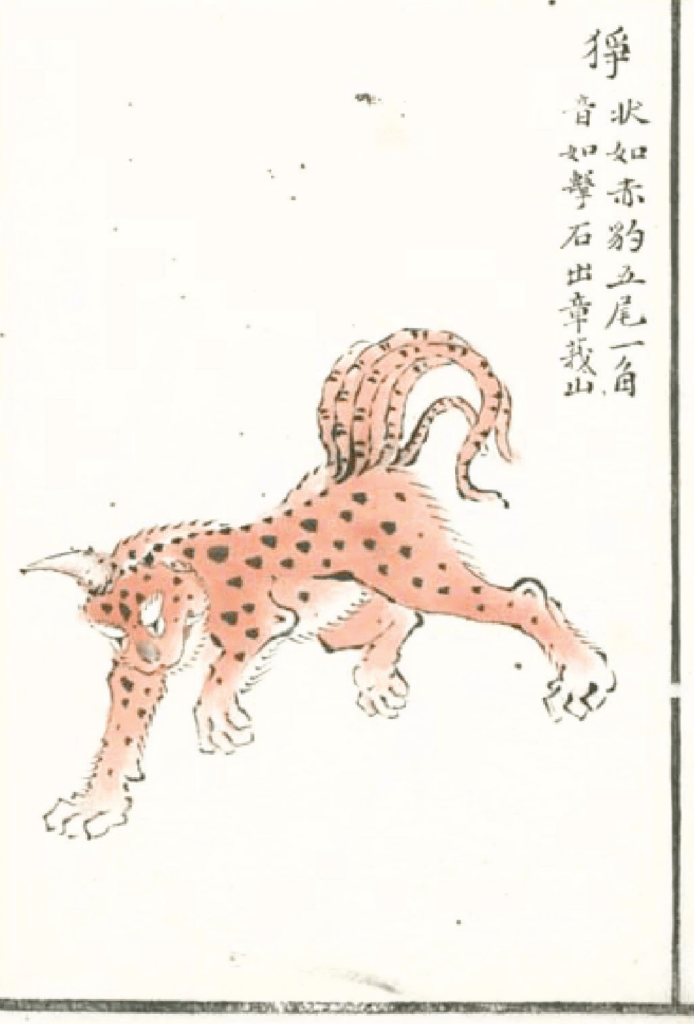
In the mountains, there is a beast called 猙(Zheng). It looks like a red leopard, with five tails and one horn. It makes a sound like the sound of striking stones.
《山海經·西次三經》
又西二百八十裏,曰章莪之山,無草木,多瑤、碧。所為甚怪。有獸焉,其狀如赤豹,五尾一角,其音如擊石,其名如猙。
Huan/讙
LeiShen/雷神: The Deity of Thunder in Chinese Mythology
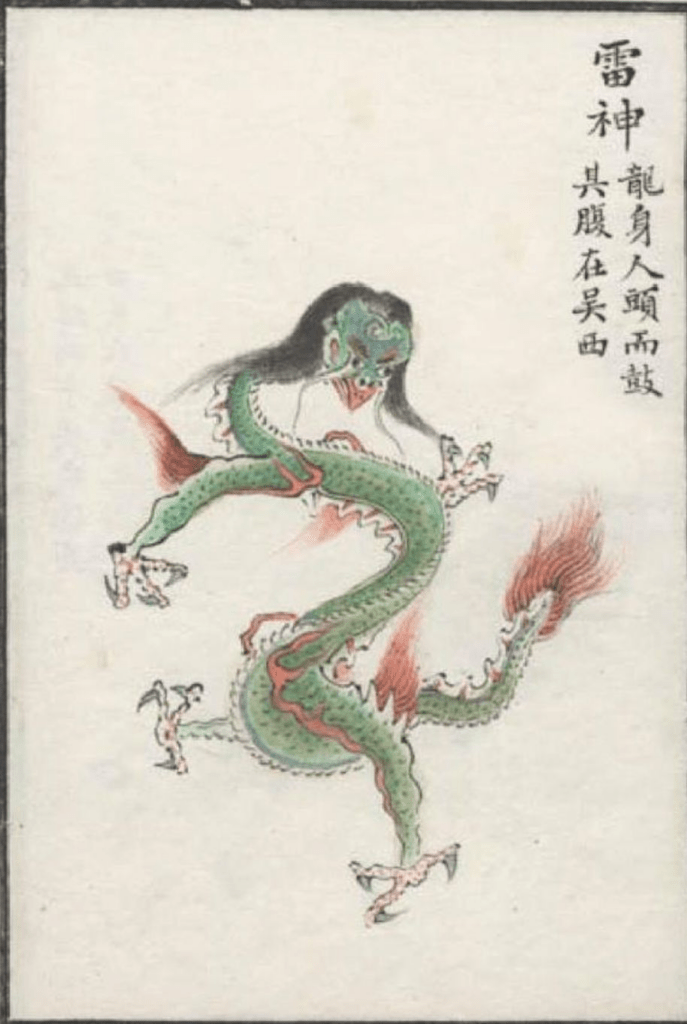
In Chinese mythology, in the Lei Ze(The lake of thunder), there lived a thunder god. This god of thunder had a dragon-like body and a human head. If he slapped his abdomen, he would make a thunderclap.
雷澤中有雷神,龍身而人頭,鼓其腹。在吳西。
《山海經 海內東經》
TianMa/天馬: Named Sky Horse But In Fact a Dog

天馬(Tianma/Sky Horse) is a beast there whose shape is like a white dog with a black head. When it sees a person, it flies away.
又東北二百裏,曰馬成之山,其上多文石,其陰多金玉,有獸焉,其狀如白犬而黑頭,見人則飛,其名曰天馬
《山海經·北山經》
GuDiao/蠱雕: A Man-Eating Eagle
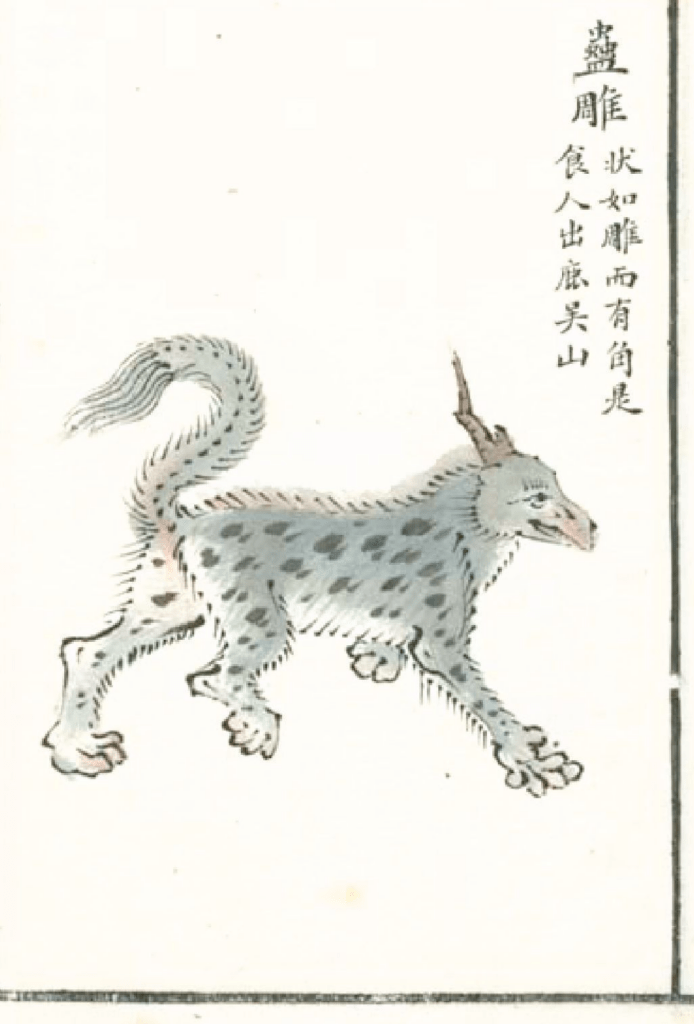
In the water, there is a beast called 蠱雕 (Gu diao). Its shape is like a eagle, and it has a horn on its head. Its sound is like a crying baby, and it eats people.
又東五百裏,曰鹿吳之山,上無草木,多金石。澤更之水出焉,而南流註於滂水。水有獸焉,名曰蠱雕,其狀如雕而有角,其音如嬰兒之音,是食人。
《山海經 南次二經》

